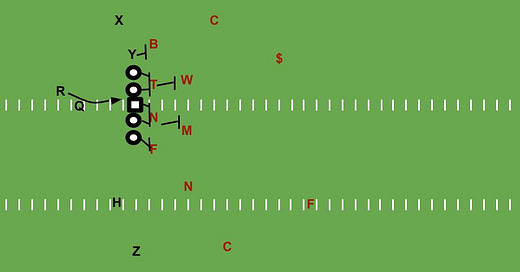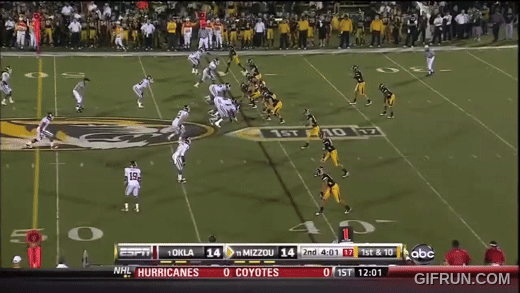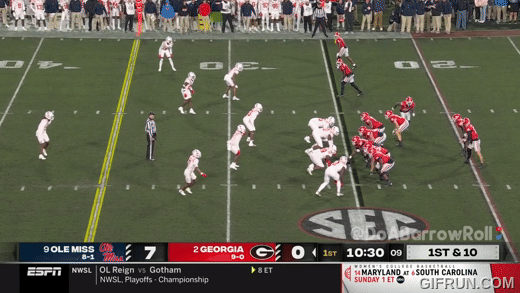Basic building blocks of X's and Os: Inside zone
What is inside zone and why does it serve as a foundational play in college football?
One of my favorite sayings these days is that Duo and inside zone are the same thing. There used to be a long running meme in coaching Twitter where someone would post a play and ask if it was inside zone or Duo. Then you’d get people arguing back and forth with one guy saying “it’s Duo because they are combo’ing to the backside linebacker” and someone else would say, “this is textbook inside zone” or whathaveyou.
There are two different types of “inside zone” which make this extra complicated. The traditional variety of inside zone features offensive linemen getting fairly lateral with their footwork and trajectories while the running back aims for the B-gap with the intention of cutting back.
Then there’s the “tight zone” variety where he aims at the play side or even backside A-gap and cuts back or bounces wide from there based on how the linebackers fit.
It’s hard to tell them apart (tight zone the running back’s trajectory is more downhill) and this latter variety of “tight” inside zone is nearly impossible to differentiate from Duo. In my estimation, it’s not worth identifying it as one or the other. This latter variety of inside zone, the kind that’s basically Duo, is also now one of the most popular and foundational schemes in college football. Today we’re going to break it down and explain why it serves that role.





